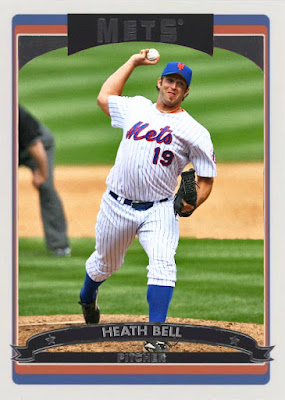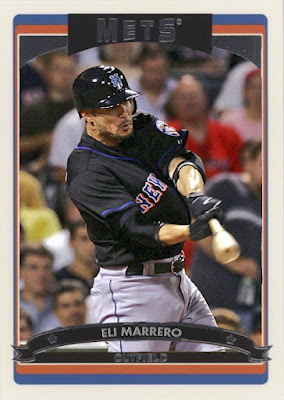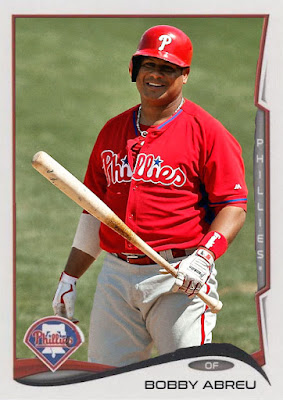As discussed, last year I didn't wanna make one of these. This year, it's practically inevitable.
As the ballot fills up with more and more people who are either steroid abusers or just too wholly unspectacular to be Hall of Famers to me, it becomes harder to really craft a good selection of players, even if this post doesn't actually mean anything. And if I were to go for all 10, which I honestly doubt that I will, I'd be reaching on more than half. Next year we at least have the promise of an interesting conversation with Carlos Beltran, with a great career whose last section is tainted by cheating as a member of the Astros, and the 2024 ballot is CHOCK FULL of interesting Hall of Fame cases, including but not limited to Joe Mauer, Matt Holliday, David Wright, Jose Bautista, Adrian Gonzalez, Chase Utley and...sweet, sweet Bartolo Colon.
But until then. A lot of reaching. A lot of 'why not him'. And a year where three people who took steroids might sneak into the Hall of Fame. Because...who the hell opposes them?
As per usual, this post is my selections for a HOF ballot if I was given the opportunity to make one. Like the regular ballot, I'm allowed up to ten selections, I don't think the max is gonna be a problem this year. And I'll briefly explain my case for these guys, and whether they actually have any chance of getting in.
Bobby Abreu:
My hope is that a Hall of Fame case eventually grows for Bobby, even though this is pretty much a vanity pick for me, but...at his peak, Abreu was legit. Every season from 1998 to 2004, Bobby Abreu had a WAR of 5 and above. Add 2005 and 2006 and every one of those seasons has a batting runs value of 23 or above. Also in that 1998 to 2004 stretch, his average fell below .300 only once. Bobby Abreu is the type of powerful contact hitter with speed and versatility that the Hall of Fame is rewarding in their veterans division, with people like Tony Oliva and Minnie Minoso getting in. I do put Abreu into that category, I think he was a pure hitter who was among the best in the league for a little over a decade, and whose offensive prowess was the key for teams like the 2000s Phils and Yankees. I don't know if he'll actually get in until a lot of bigger cases come off the board, but I'll keep putting him on here.
Team of Induction: Philadelphia Phillies
Odds of 2022 Induction: 30 to 1
Odds of Eventual Induction: 9 to 1
Todd Helton:
Larry Walker coming off the ballot has done a ton of good for his former battery partner Todd Helton. In the past two seasons, Helton's percentages on the ballot have grown, from 29.2 percent when Walker was inducted to 44.9% last year. Currently, Helton is polling at 57.8, and that's with about half the ballots in. There is a chance he breaks 60% this year, and pretty much everyone who's done that recently, except for Curt Schilling, has gotten in. So it's looking like Helton might still be two or three years away from Cooperstown, but it's looking like people are recognizing that Helton belongs there. I would call Helton one of the top hitters of his era, and one of the best offensive performers of the 2000s, with a .331 average, 260 homers, 981 RBIs and 1756 hits in that era. Helton was also one of the most consistent players of that era, only having one injury-plagued year in the 2000s, before being sidelined a bit in his last few seasons. Like Abreu, it comes down to a specific run of years- Helton's run from 2000 to 2004 results in 5 straight ASG nods, 5 straight seasons with an OPS over 1, 4 consecutive 100-RBI years, and 5 consecutive 30-homer years [six if you add 1999]. If Walker is in, Todd Helton needs to be in too.
Team of Induction: Colorado Rockies
Odds of 2022 Induction: 12 to 1
Odds of Eventual Induction: 5 to 1
David Ortiz:
I explained a lot of this in my steroids post from last week, but I'll restate most of it. David Ortiz is going to be inducted mostly because of his status as a symbol for Boston sports. The man won three rings, hit over 500 homers, made 10 All Star teams, won a Home Run Derby, only had one injury-marred campaign with the Sox, and kept producing consistently until he was 40. He may also have one of the most impressive final seasons of any recent Hall of Famer, steroids or no steroids. Yes, the allegations are pretty legit-sounding, and I do think Ortiz may have juiced in some way, but...it's all too nebulous to really make a judgment call on, a lot like Mike Piazza, who avoided steroid allegations a few years ago. I will add, though, that the only reason a lot of writers have a clear conscience in voting for Ortiz is that about 6 years ago, the commissioner of baseball essentially pardoned him. I forget the guy's name, something Manfred or somebody, big prick who hates baseball, but his vindication of Ortiz is why there hasn't been the usual anti-steroid lag in his cases [like what A-Rod's going through]. Regardless, I think Ortiz has the career for it, and is a classic-type sports hero that deserves to be in.
Team of Induction: Boston Red Sox
Odds of 2022 Induction: 5 to 4
Odds of Eventual Induction: Even
Scott Rolen:
Scott Rolen has become my new Edgar Martinez. Not Omar Vizquel, I'm done voting for him after last year's abuse allegations. Rolen. He's the new long-termer dark horse on the ballot. And like Edgar, I think the support needs to coagulate. I always thought the numbers were there for Rolen- some amazing defensive numbers with Philly and St. Louis, production into his late 30s with Cincinnati, and a tremendous pair of playoff runs in 2004 and 2006. Rolen was never a marquee name, but he was always a player that your roster felt incomplete without, an argument we're gonna hear for Adrian Beltre in two years. Rolen has 5 100+ RBI seasons, 7 25+ home run seasons, 7 ASG nods, including 2 past the age of 35, and had that stellar 2004 with the full, five-tool range all around. I think that Rolen has a chance to sneak in this year if the rest of the ballots come his way, but if not, I think he'll DEFINITELY get in next year, as he'll be one of the top vote-getters still on the ballot.
Team of Induction: St. Louis Cardinals
Odds of 2022 Induction: 4 to 1
Odds of Eventual Induction: 2 to 1
Jimmy Rollins:
Another vanity pick, but I wasn't gonna NOT vote for one of my favorite players once he got on the ballot. The 2008 Phils core is slowly showing up here, as Ruiz will be on the ballot next year, and in 2024 we'll get Utley and Werth. This year we even have Ryan Howard on the ballot, and while I'm not voting for him because he burned out way too quickly, I am gonna slide a vote Jimmy Rollins' way because I do think that he was one of the best shortstops in the league in the 2000s. The AL had Jeter, the NL much had Jimmy Rollins. Rollins was another great contact hitter with a huge MVP season in 2007, a big effort for the WS runs in 2008 and 2009, some breakout energy in the early 2000s with ASG runs, and 470 stolen bases, which is a pretty nice stat. Rollins was the backbone of the Phillies from 2001 until 2014, and was a hero to many. I don't know if the rest of the writers' association will think he's a HOFer, but I think it'd be pretty awesome if he made it. Maybe a few years away, but...it's possible.
Team of Induction: Philadelphia Phillies
Odds of 2022 Induction: 20 to 1
Odds of Eventual Induction: 14 to 1
Billy Wagner:
This year, we're going to see Jonathan Papelbon and Joe Nathan leave the ballot on their first year on. We've already seen Trevor Hoffman, Lee Smith and Mariano Rivera get into the Hall recently. I have no idea who is going to be the next closing pitcher to be inducted after Mo. Francisco Rodriguez? Craig Kimbrel when he retires? There aren't a lot of sure bets like there were at one point. Maybe the only stellar, consistent closing weapon we have left on there is Billy Wagner. Once again talking about the 2000s, Billy Wagner was a factor in his team's closing schematic every year from 2001 until 2008. In that period he had 35 or more saves five times. He finished a season with 100 strikeouts on four occasions, including his final season with Atlanta, where he was 38, and made an All-Star team. Though he was a bit of an ass, he isn't as much of an ass as some other people on this ballot [Schilling, Kent, Papelbon], and was a standard for closing pitching for about 15 years. I think that if Hoffman and Rivera are in, Wagner should get in too.
Team of Induction: Houston Astros
Odds of 2022 Induction: 17 to 1
Odds of Eventual Induction: 8 to 1
So, that's what we're working with. I think Bonds, Clemens and Ortiz are going in. I can hope for somebody like Rolen to sneak in with them, but the 2022 Hall of Fame class is meant to just brush all the ugliness off the table, for better or for worse.















